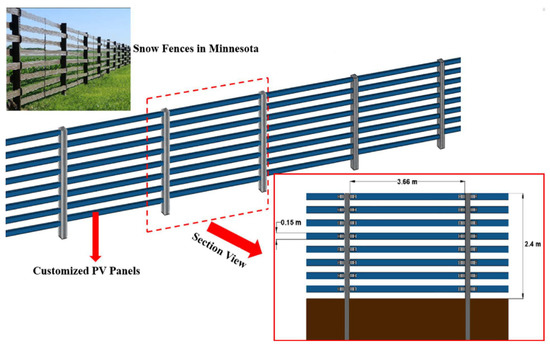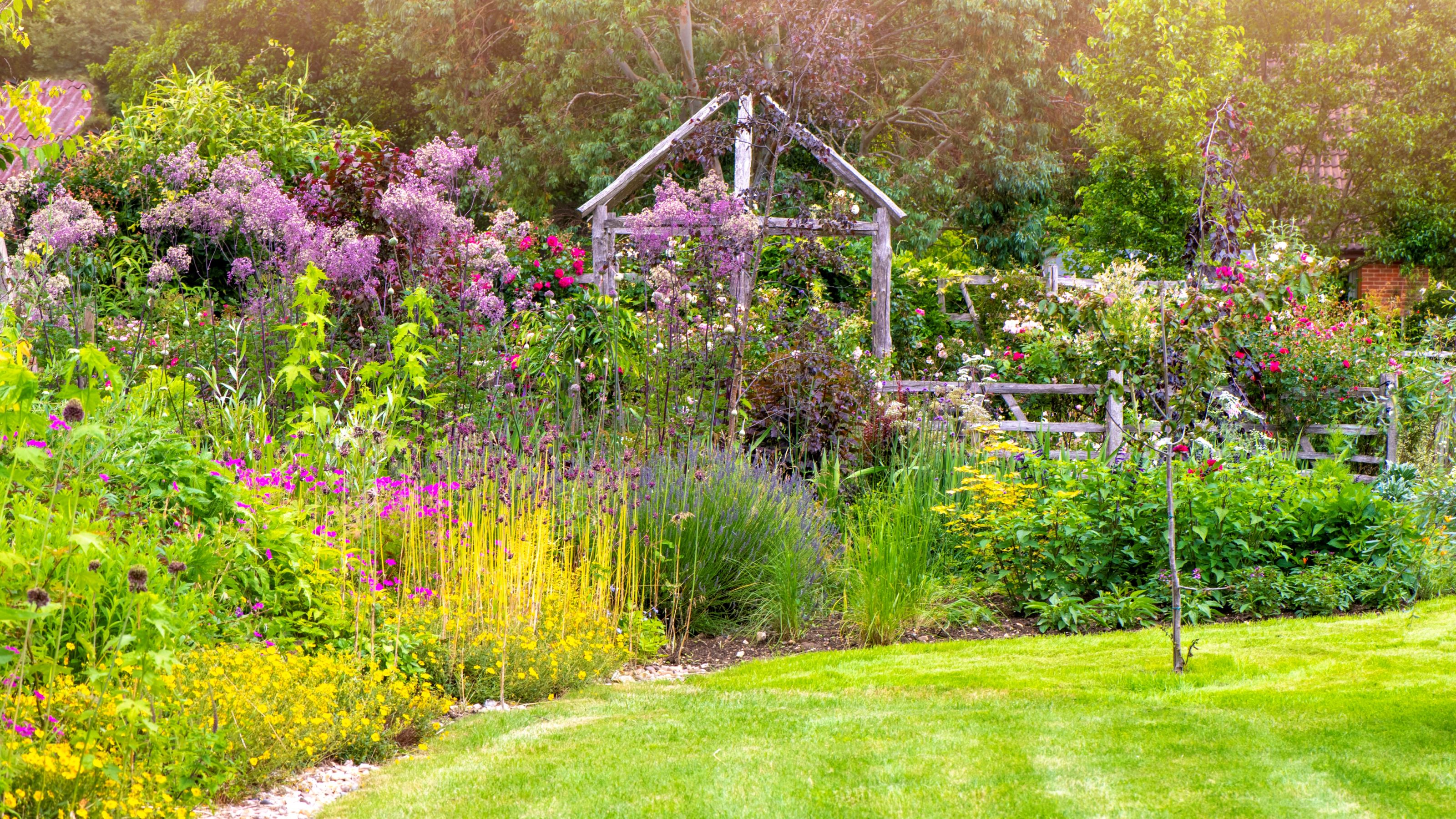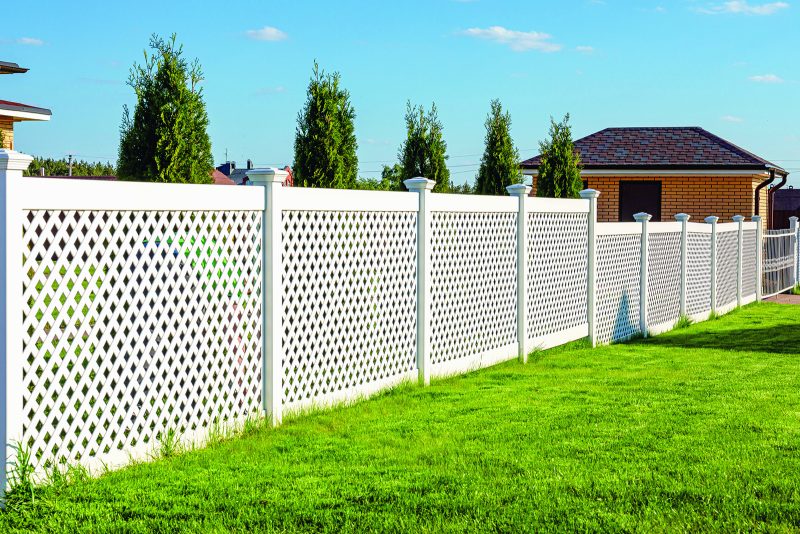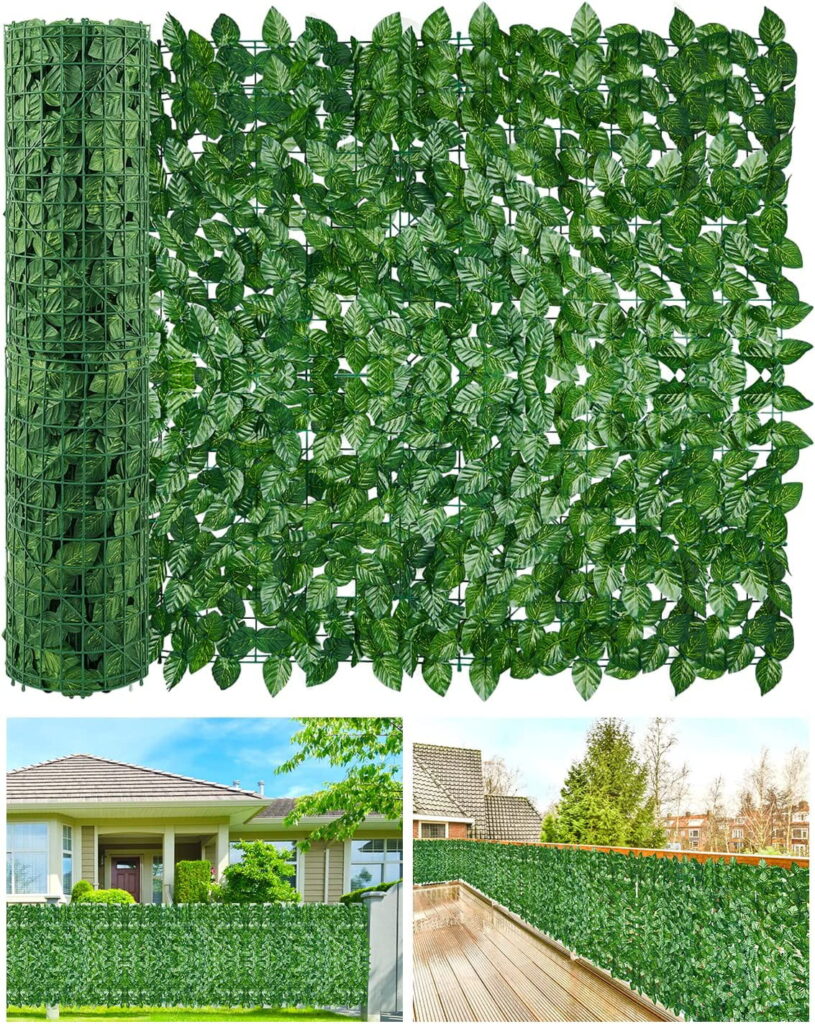Are you looking for ways to maximize your privacy with strategic fence placement? Wondering what types of fence are best suited for different needs? Well, you’ve come to the right place! In this blog post, you’ll learn all about the intricacies of fence types, their sizes, shapes, materials, and how to determine which one is suitable for your specific requirements.
Through comprehensive and engaging content, I aim to educate you on the characteristics and advantages of various fence types such as wooden fences, chain-link fences, vinyl fences, metal fences, and more. Whether you want to enhance privacy, ensure security, enclose a backyard, or simply add decorative elements to your property, I’ll provide you with insights on the benefits, considerations, durability, maintenance requirements, and aesthetic appeal of each fence type. I’ll also guide you on choosing the appropriate size and shape of a fence based on factors like property size, desired level of enclosure, and architectural considerations.
So, if you’re ready to become an expert in maximizing privacy with strategic fence placement, keep reading and get ready to make informed decisions when selecting and installing fences.
As we delve into the world of fences, you may have some common questions in mind. For each blog post, I’ll provide you with a list of the top 10 questions and answers that people frequently ask about fences. From tips on fence maintenance to advice on fence installation, you’ll have all the information you need at your fingertips. Fences are an essential component of any property, providing security, privacy, and aesthetic appeal. There are numerous types of fences available, each with its own advantages and considerations. In this article, we will explore the different types of fences, the benefits and considerations of each, and how to determine which fence is suitable for your specific needs. We will also discuss the various sizes and shapes of fences, the materials used in their construction, and their durability and maintenance requirements. Additionally, we will delve into the aesthetic appeal of fences and their uses for specific purposes. By the end of this article, you will have a comprehensive understanding of fences and be able to make an informed decision when it comes to selecting the right fence for your property.

Types of Fences
Wooden Fences
Wooden fences are a popular choice for their natural beauty and versatility. They come in various styles, such as picket fences, privacy fences, and farm fences. Wooden fences offer privacy and can be customized to fit different property sizes and shapes. However, they require regular maintenance, including staining and painting, to ensure longevity.
Chain-link Fences
Chain-link fences are durable and cost-effective options for residential, commercial, and industrial properties. They provide security and are often used to enclose outdoor spaces. While chain-link fences are not as visually appealing as other types, they are low maintenance and can be enhanced with privacy slats or vegetation.
Vinyl Fences
Vinyl fences are known for their durability, low maintenance requirements, and wide range of styles. They are resistant to rot, fading, and discoloration, making them an excellent choice for areas with harsh weather conditions. Vinyl fences offer privacy and can mimic the look of wood or other materials.
Metal Fences
Metal fences, such as aluminum and steel, are strong, durable, and provide excellent security. They come in various styles, including ornamental designs, and can be customized to fit different heights and widths. Metal fences require minimal maintenance and are resistant to weather damage.
Composite Fences
Composite fences are made from a combination of wood fibers and recycled plastic. They offer the look of wood without the maintenance requirements. Composite fences are resistant to rot, pests, and fading, making them a long-lasting and eco-friendly option.
Wrought Iron Fences
Wrought iron fences are known for their elegance and timeless appeal. They provide security and can be customized with decorative elements. Wrought iron fences require regular maintenance to prevent rust and maintain their appearance.
Bamboo Fences
Bamboo fences are a sustainable and eco-friendly option. They provide privacy and have a natural aesthetic that complements outdoor spaces. Bamboo fences require regular maintenance, including staining or sealing, to ensure longevity.
Farm Fences
Farm fences are designed to keep livestock contained and predators out. They are typically made from wood or electric wire and come in various styles, such as split rail and post-and-rail fences. Farm fences are durable and require minimal maintenance.
Privacy Fences
Privacy fences are designed to block the view from neighboring properties or public areas. They can be made from various materials, including wood, vinyl, and composite. Privacy fences offer a high level of enclosure and can be customized in terms of height and design.
Picket Fences
Picket fences are a classic choice for residential properties. They are made from wood or vinyl and feature evenly spaced vertical boards known as pickets. Picket fences are decorative and provide a moderate level of enclosure.
Electric Fences
Electric fences are primarily used for agricultural purposes, such as containing livestock or deterring wildlife. They deliver an electric shock to prevent animals from crossing the boundary. Electric fences require professional installation and regular maintenance to ensure proper functionality.
Benefits and Considerations of Each Fence Type
Advantages of Wooden Fences
Wooden fences offer natural beauty and provide privacy. They can be customized to fit different property sizes and styles. However, wooden fences require regular maintenance, including staining and painting.
Considerations for Chain-link Fences
Chain-link fences are cost-effective and low maintenance. They provide security but may not offer as much privacy. Chain-link fences can be enhanced with privacy slats or vegetation.
Benefits of Vinyl Fences
Vinyl fences are durable, low maintenance, and resistant to rot and fading. They offer a wide range of styles and can mimic the look of wood or other materials.
Advantages and Disadvantages of Metal Fences
Metal fences, such as aluminum and steel, are strong, durable, and provide excellent security. They require minimal maintenance but may not offer as much privacy. Metal fences can be customized with various designs.
Benefits of Composite Fences
Composite fences offer the look of wood without the maintenance requirements. They are resistant to rot, pests, and fading, making them a long-lasting and eco-friendly option.
Advantages and Uses of Wrought Iron Fences
Wrought iron fences are elegant and provide security. They can be customized with decorative elements but require regular maintenance to prevent rust.
Benefits and Considerations of Bamboo Fences
Bamboo fences are sustainable and provide privacy. They have a natural aesthetic but require regular maintenance, including staining or sealing.
Benefits and Uses of Farm Fences
Farm fences are durable and designed to keep livestock contained. They can be made from wood or electric wire and require minimal maintenance.
Advantages of Privacy Fences
Privacy fences offer a high level of enclosure and block the view from neighboring properties or public areas. They can be made from various materials.
Benefits and Styles of Picket Fences
Picket fences are decorative and provide a moderate level of enclosure. They are a classic choice for residential properties and can be made from wood or vinyl.
Uses and Benefits of Electric Fences
Electric fences are primarily used for agricultural purposes and deliver an electric shock to prevent animals from crossing the boundary. They require professional installation and regular maintenance.
Determining the Suitable Fence Type
To determine the suitable fence type for your property, you need to consider various factors based on your specific needs and requirements. Here are some considerations for different purposes:
Factors to Consider for Residential Fences
- Privacy: If your main priority is privacy, you should consider taller fence options, such as vinyl or composite fences.
- Aesthetic Appeal: If you want to enhance the curb appeal of your property, you may opt for fences with decorative elements, such as wrought iron or ornamental metal fences.
- Pet Containment: If you have pets, you need to choose a fence that can effectively contain them, such as a chain-link or vinyl fence with no gaps.
- Property Size and Design: The size and design of your property will influence the type and style of fence that would complement the overall appearance.
Choosing the Right Fence for Commercial Applications
When selecting a fence for commercial applications, consider the following factors:
- Security: Commercial properties often require fences that provide excellent security, such as metal fences or chain-link fences with barbed wire.
- Durability: Commercial fences should be able to withstand heavy use and potential vandalism. Metal fences or vinyl-coated chain-link fences are good options.
- Maintenance: Consider the maintenance requirements of the fence, as commercial properties may not have the resources for extensive upkeep.
- Aesthetic Appeal: Choose a fence that aligns with the branding and overall aesthetic of the commercial property.
Selecting Fences for Agricultural Purposes
For agricultural needs, the following factors should be taken into account:
- Livestock Containment: Depending on the type of livestock you have, choose a fence that is suitable for containing them. Electric fences, wire mesh fences, or wooden post-and-rail fences are common options.
- Predators: If there are potential predators in the area, consider using fences with electric wire or high-tensile wire to deter them.
- Longevity: Agricultural fences should be made from durable materials, such as treated wood or high-quality wire, to withstand the elements and the wear and tear of livestock.
- Maintenance: Assess the maintenance requirements of the fence, as agricultural properties may have limited time and resources for regular upkeep.
Factors to Consider for Pool Fences
Ensuring safety around pools is crucial. When selecting a fence for pool areas, consider the following factors:
- Height: Pool fences should typically be at least 4 feet tall to prevent unauthorized access.
- Gate Requirements: Pool fence gates should be self-closing and self-latching to ensure they are always securely closed.
- Visibility: Some jurisdictions require pool fences to have minimal gaps or be made from transparent materials to ensure visibility.
- Code Compliance: Familiarize yourself with local building codes and regulations regarding pool fences to ensure compliance.
Fences for Enhanced Security
If security is your primary concern, consider the following factors when selecting a fence:
- Height and Anti-climbing Measures: Opt for taller fences with features that make them difficult to climb, such as pointed or curved tops or anti-climbing devices.
- Gate and Access Control: Install secure gates with robust locking mechanisms and consider integrating access control systems, such as keypads or electronic locks.
- Material Strength: Choose a fence made from strong and durable materials, such as metal, to deter unauthorized entry.
- Surveillance and Lighting: Consider installing surveillance cameras and proper lighting to enhance security measures.
Choosing Fences for Privacy
To maximize privacy on your property, keep the following factors in mind:
- Height: Opt for taller fences that provide adequate privacy, such as solid wood, vinyl, or composite fences.
- Material: Choose a fence material that offers complete privacy, such as vinyl or solid wood, to block the view from neighboring properties.
- Design: Consider fences with minimal to no gaps or decorative elements that enhance privacy without sacrificing aesthetics.
- Vegetation: Use climbing plants or install trellises to further enhance privacy by adding an additional layer of coverage.
Decorative Fences and Their Uses
Decorative fences can add a stylish touch to your property. Here are some considerations:
- Material and Design: Choose a fence material, such as wrought iron or ornamental metal, that offers both functionality and aesthetic appeal.
- Height and Proportions: Consider the appropriate height and proportions of the fence to ensure it complements the overall design of your property.
- Ornamental Elements: Look for fences with decorative elements, such as scrolls or finials, that enhance the overall appearance.
- Landscaping Integration: Coordinate your fence with landscaping elements, such as flower beds or hedges, to create a cohesive and visually appealing outdoor space.
Sizes and Shapes of Fences
Standard Fence Sizes for Residential Use
Residential fences come in various sizes, depending on the purpose and level of enclosure required. Standard fence heights for privacy fences range from 6 to 8 feet, while picket or decorative fences are typically 3 to 4 feet tall. Fence widths can vary based on the desired level of enclosure and the specific requirements of the property.
Customizing Fence Sizes for Specific Needs
Fences can be customized to fit specific needs or property requirements. In cases where standard fence sizes don’t meet your needs, you can work with a professional fence contractor or manufacturer to create a custom-sized fence. This allows you to maximize the use of available space and ensure the fence meets your desired specifications.
Different Fence Shapes and Their Aesthetic Appeal
Fences come in various shapes, and the shape you choose can have a significant impact on the aesthetic appeal of your property. Common fence shapes include straight lines, scallops, or arches. Straight lines provide a clean and modern look, while scallops or arches add elegance and visual interest.
Choosing Curved or Straight Fence Lines
The choice between curved or straight fence lines depends on personal preference and the overall design of your property. Curved fence lines can add a soft and flowing effect, while straight lines lend a more linear and contemporary look. Consider the architectural style of your property when deciding between curved or straight fence lines.
Fencing for Irregularly Shaped Properties
If your property has irregular shapes or slopes, you may need to customize your fence to accommodate these features. In such cases, working with a professional fence contractor is crucial. They can design and install a fence that follows the contours of your property, ensuring a seamless and visually appealing result.

Materials Used in Fence Construction
Wooden Fence Materials and Their Characteristics
Wooden fences can be made from various types of wood, including cedar, redwood, or treated lumber. Cedar and redwood offer natural resistance to decay and insect infestation. Treated lumber is chemically treated to enhance its durability and resistance to rot. The choice of wood depends on factors such as budget, desired aesthetics, and maintenance requirements.
Metal Fence Materials and Their Durability
Metal fences can be made from materials such as aluminum, steel, or wrought iron. Aluminum fences are lightweight and resistant to rust, making them suitable for various environments. Steel fences are strong and durable, providing excellent security and longevity. Wrought iron fences are known for their elegance and timeless appeal but require regular maintenance to prevent rust.
Types of Vinyl Used for Fences
Vinyl fences are typically made from polyvinyl chloride (PVC) or a blend of PVC and other materials. The type of vinyl used in fences can vary in terms of thickness, color, and texture. The quality of the vinyl affects its durability, impact resistance, and resistance to discoloration. High-quality vinyl fences often come with UV inhibitors to prevent fading.
Pros and Cons of Composite Fence Materials
Composite fences are made from a combination of wood fibers and recycled plastic. The materials used in composite fences can vary, and the specific composition affects the fence’s durability, resistance to fading, and overall appearance. Composite fences offer the look of wood without the maintenance requirements. However, they may be more expensive than other fence options.
Advantages and Disadvantages of Wrought Iron as a Fence Material
Wrought iron fences are known for their elegance and durability. They offer excellent security and can be customized with decorative elements. However, wrought iron requires regular maintenance to prevent rust and may be more expensive compared to other fence materials.
Durability and Maintenance Requirements
Longevity of Wooden Fences and Maintenance Tips
The longevity of wooden fences depends on the type of wood used, regular maintenance, and environmental factors. Proper maintenance, such as staining or painting, can extend the lifespan of a wooden fence. Regular inspections and repairs are also necessary to address any damage or deterioration.
Maintaining and Repairing Metal Fences
Metal fences, such as aluminum or steel, are generally low maintenance. Regular cleaning to remove dirt and debris can help prevent rust or corrosion. Any damages or signs of wear should be promptly addressed to ensure the fence’s longevity.
Cleaning and Care for Vinyl Fences
Vinyl fences are low maintenance and require minimal care. Regular cleaning with soap and water can remove dirt or stains. Avoid using abrasive cleaners or tools that may scratch the surface. Inspect the fence for any damages and make repairs as needed.
Composite Fence Maintenance and Repair
Composite fences are generally low maintenance, requiring little care beyond occasional cleaning. Regular inspections should be conducted to identify any damaged or cracked panels. Repairs can be made by replacing the affected composite boards. Following the manufacturer’s guidelines for cleaning and care will help maintain the fence’s appearance and functionality.
Caring for Wrought Iron Fences
Wrought iron fences require regular maintenance to prevent rust and maintain their appearance. Periodic cleaning with a mild detergent and water can remove dirt or debris. Inspect the fence for any signs of rust and treat it promptly. Applying a protective coating or wax can help prevent rust and preserve the fence’s finish.

Aesthetic Appeal of Fences
Enhancing Curb Appeal with Beautiful Fences
Fences can significantly enhance the curb appeal of a property by adding visual interest and defining the boundaries. Choosing a fence that complements the architectural style and color scheme of the property can create a cohesive and visually appealing look.
Decorative Elements and Finishes for Fences
Decorative elements, such as scrolls, finials, or lattice patterns, can add a unique touch to fences. These elements can be incorporated into various fence types, such as wrought iron, vinyl, or metal. Additionally, choosing the right finish, such as a powder-coated or painted surface, can enhance the fence’s appearance and durability.
Fences as Landscape Design Features
Fences can serve as integral elements in landscape design, providing structure and defining outdoor spaces. Incorporating fences into landscaping plans allows for visual integration, such as using climbing plants or incorporating garden beds along the fence line. Thoughtful landscape design can create a harmonious and cohesive outdoor environment.
Fences for Specific Purposes
Fences to Enclose Backyards and Outdoor Spaces
Fences are commonly used to enclose backyards and outdoor spaces for privacy, security, and to establish boundaries. Depending on the desired level of enclosure, various fence types can be used, such as vinyl, wood, or composite fences.
Fencing Options for Pool Safety
Pool fences are essential for safety and to prevent unauthorized access. Pool fences should meet specific height and gate requirements according to local regulations. Choosing a fence material that is durable, low maintenance, and provides adequate visibility is crucial for pool safety.
Fences for Pet Containment
Fences are often used to contain pets within a property, ensuring their safety and preventing them from wandering off. When selecting a fence for pet containment, consider the height, material, and any gaps that may allow the pet to escape.
Fencing for Agricultural Needs
Agricultural fences serve multiple purposes, such as containing livestock, protecting crops from wildlife, or delineating property boundaries. Various fence types can be used in agriculture, including electric fences, wire mesh fences, or wooden post-and-rail fences.
Privacy Fences for Enhanced Seclusion
Privacy fences are designed to block the view from neighboring properties or public areas. They offer a high level of enclosure and can be made from materials such as wood, vinyl, or composite. Privacy fences are ideal for creating a secluded outdoor space.
Security Fences for Property Protection
Security fences are primarily used to protect properties from unauthorized access and to deter potential intruders. These fences are often made from durable materials, such as metal or composite, and may include features like anti-climbing measures or gated entry systems.
Ornamental Fences for a Stylish Touch
Ornamental fences add a stylish touch to properties while still providing some level of enclosure. They are often made from materials like wrought iron or ornamental metal and can be customized with decorative elements. Ornamental fences are commonly used in residential or commercial settings to enhance aesthetics.

Choosing the Right Fence for Your Property
Evaluating Property Size and Fence Compatibility
When choosing a fence for your property, consider its size and how the fence will fit within the space. Assess the dimensions of your property and determine if any adjustments need to be made to accommodate the fence properly.
Considering Neighborhood Regulations and HOA Guidelines
Before installing a fence, familiarize yourself with any neighborhood regulations or homeowner association (HOA) guidelines that may be in place. These regulations may include restrictions on fence height, materials, or design. Failure to comply with these regulations can lead to fines or the need to remove or modify the fence.
Architectural Considerations for Fence Selection
Consider the architectural style of your property when selecting a fence. The fence should complement the overall design and aesthetics of your home. For example, a contemporary property may benefit from a sleek and modern fence design, while a farmhouse-style home may be best suited for a wooden or picket fence.
Matching Fence Style with Property Design
The overall design of your property should align with the style of the fence you choose. Consider the exterior colors, landscaping, and existing elements of your property when selecting a fence. A well-coordinated fence can enhance the overall visual appeal of your property.
Guidance on Installing a Fence
Planning and Measuring for Fence Installation
Before installing a fence, careful planning and accurate measurements are essential. Begin by identifying the property lines and obtaining any necessary permits or permissions. Measure the area where the fence will be installed to determine the quantity of materials needed.
Preparing the Ground and Setting Posts
Preparing the ground for fence installation involves clearing any obstructions, such as rocks or vegetation, and leveling the area. Dig holes for the fence posts, ensuring they are evenly spaced and at the correct depth. Use a level to ensure the posts are straight.
Methods for Fence Panel Installation
Fence panels can be installed using various methods, depending on the fence type and materials. Common installation methods include attaching panels to posts using brackets, screws, or nails. Follow the manufacturer’s instructions for proper panel installation.
Proper Techniques for Securing Gates
Gates should be properly secured to ensure functionality and security. Use hinges and latches specifically designed for gates, ensuring they are installed correctly. A gate should swing freely, latch securely, and remain level.
Understanding Fence Building Codes and Regulations
Fence building codes and regulations vary depending on the location. Research local regulations and obtain the necessary permits before installing a fence. Compliance with building codes is crucial to ensure the fence is safe, structurally sound, and in alignment with local regulations.

Common Fence Installation Mistakes to Avoid
Improper Fence Alignment and Crooked Lines
One common mistake during fence installation is improper alignment, resulting in crooked or uneven fence lines. Use a level, string, or laser level to ensure the fence posts and panels are correctly aligned.
Insufficient Foundation Preparation
Failure to properly prepare the foundation can lead to fence instability or unevenness. Clear the area of any obstructions, level the ground, and dig the holes for the fence posts at the correct depth.
Inadequate Post Installation Techniques
Posts play a crucial role in the stability and durability of the fence. Properly set the posts at the correct depth and ensure they are securely anchored in the ground, especially for fences in areas prone to strong winds or soil movement.
Poor Quality Gate Installation
Gates should be installed correctly to ensure proper functionality and security. Use high-quality hinges, latches, and hardware to ensure the gate swings freely, latches securely, and remains level.
Non-compliance with Local Building Codes
Failure to comply with local building codes and regulations can result in penalties, fines, or the need to remove or modify the fence. Research and understand the specific requirements for fence installation in your area and obtain the necessary permits.
Frequently Asked Questions about Fences
What are the best materials for a durable fence?
The best materials for a durable fence depend on factors such as location, purpose, and personal preferences. Generally, materials such as aluminum, steel, vinyl, or composite offer durability and low maintenance.
How long do wooden fences typically last?
The lifespan of wooden fences varies depending on factors such as the type of wood used, maintenance, and exposure to the elements. On average, properly maintained wooden fences can last anywhere from 15 to 20 years or more.
What is the recommended height for a privacy fence?
The recommended height for a privacy fence depends on your desired level of enclosure and local regulations. Typically, privacy fences are at least 6 feet tall to ensure adequate privacy.
Can chain-link fences be used for security?
While chain-link fences provide some level of security, they may not offer the same level of deterrence as solid or metal fences. Adding privacy slats or barbed wire can enhance security features.
Do vinyl fences require painting?
Vinyl fences do not require painting. They are manufactured with color built into the material, eliminating the need for regular painting or staining. Vinyl fences typically only require occasional cleaning.
Are composite fences eco-friendly?
Composite fences are considered more eco-friendly than traditional wood fences as they are made from recycled materials. However, the specific composition of the composite material can vary, so it’s important to choose a product that aligns with your environmental values.
What are the maintenance requirements for a wrought iron fence?
Wrought iron fences require regular maintenance to prevent rust and maintain their appearance. This includes cleaning with mild detergent and water, inspecting for rust or damage, and applying a protective coating or wax as needed.
Can electric fences be used for small pets?
Electric fences can be used for small pets, provided the electric shock is set at a safe and appropriate level. However, it’s essential to consult with professionals and follow electrical safety guidelines to ensure the well-being of your pets.
How do I choose the right size and shape for my fence?
When choosing the right size and shape for your fence, consider factors such as property size, desired level of enclosure, architectural style, and personal preferences. Consult with a fence contractor or professional to find the best fit for your specific needs.
Does a fence add value to a property?
A well-designed and properly installed fence can add value to a property. Fences provide security, privacy, and aesthetic appeal, which are desirable features for potential buyers. However, it’s important to consider the preferences and market trends in your specific area.
Conclusion
Strategic fence placement can maximize privacy, security, and aesthetics for your property. By understanding the different types of fences, their benefits and considerations, and how to determine the suitable fence type for your needs, you can make informed decisions when selecting and installing fences. Consider the size and shape of the fence, the materials used in its construction, its durability and maintenance requirements, and the aesthetic appeal it adds to your property. Whether you are looking to enhance privacy, improve security, or add a stylish touch, the right fence can transform your property into a functional and visually appealing space.
